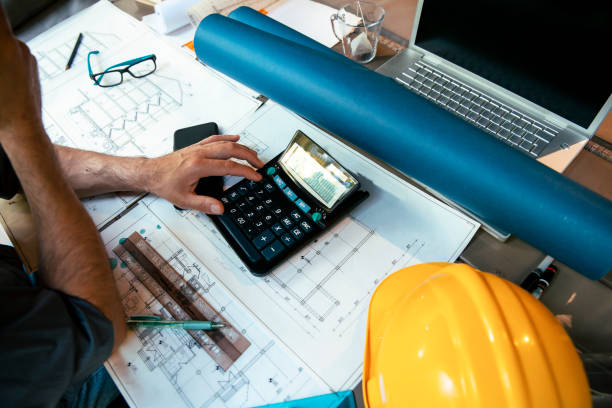
How To Reduce Building Construction Cost
When it comes to construction, costs can escalate quickly. Whether you’re building your dream home or a commercial space, managing expenses is crucial. This blog post will guide you through practical, actionable strategies to reduce building construction costs. From planning and design to material selection and labor management, we’ve got you covered.
The Importance of a Detailed Plan
A detailed plan is the foundation of any successful construction project. Without it, costs can spiral out of control due to unforeseen issues and changes. A comprehensive plan helps you foresee potential problems and address them early, saving both time and money.
- Start with a clear vision of what you want to achieve. Outline the scope of the project, including size, design, and functionality.
- Develop a detailed budget that covers all aspects of the project, from materials to labor.
- Consult with professionals like architects and contractors to ensure your plan is feasible and cost-effective.
Choosing the Right Materials
Selecting the right materials can significantly impact your construction costs. While it might be tempting to opt for the cheapest options, this can lead to higher maintenance costs in the long run.
- Research different materials and their costs. Compare prices and durability to make an informed decision.
- Consider using recycled or repurposed materials. They are often cheaper and environmentally friendly.
- Buy materials in bulk to get discounts. Coordinate with your contractor to order everything at once.
Efficient Design for Cost Reduction
An efficient design can save you a considerable amount of money. Simple, functional designs not only reduce construction costs but also lower future maintenance expenses.
- Opt for a minimalist design that focuses on functionality. Avoid unnecessary complexities that can drive up costs.
- Use standard sizes for doors, windows, and other fixtures. Custom sizes can be expensive.
- Incorporate energy-efficient features like proper insulation and energy-saving appliances. These can reduce long-term operational costs.
Hiring the Right Professionals
The team you hire plays a crucial role in determining the success and cost-efficiency of your project. Experienced professionals can help you avoid costly mistakes.
- Do thorough research before hiring. Check credentials, reviews, and previous work.
- Get multiple quotes to compare prices. Don’t just go for the cheapest option; consider the value they offer.
- Establish clear communication channels. Ensure everyone involved understands the project scope and budget constraints.
Effective Project Management
Good project management can prevent delays and cost overruns. It’s essential to keep the project on track and within budget.
- Develop a realistic timeline and stick to it. Delays can increase labor costs and extend rental equipment fees.
- Monitor progress regularly. Regular check-ins can help you identify and address issues before they escalate.
- Be flexible but cautious with changes. While some adjustments may be necessary, avoid frequent changes that can disrupt the project and increase costs.
Utilizing Technology
Technology can streamline various aspects of construction, making processes more efficient and cost-effective.
- Use project management software to track progress and manage resources.
- Implement Building Information Modeling (BIM) to visualize the project and identify potential issues early.
- Use drones for site surveys and inspections. They can provide accurate data and reduce the need for manual checks.
Negotiating with Suppliers
Negotiating with suppliers can lead to significant cost savings. Building a good relationship with your suppliers can also result in better deals and priority service.
- Ask for bulk discounts, especially for large orders.
- Negotiate payment terms that are favorable to you. Some suppliers may offer discounts for early payments.
- Establish long-term relationships with reliable suppliers. Consistent business can lead to better deals over time.
Reducing Waste
Minimizing waste not only saves money but is also environmentally responsible. Plan carefully to use materials efficiently.
- Order the right amount of materials to avoid excess.
- Reuse and recycle materials wherever possible.
- Train workers to handle materials efficiently to minimize wastage.
Leveraging Tax Incentives
Many governments offer tax incentives for using eco-friendly materials and practices. These incentives can significantly reduce your overall costs.
- Research available tax credits and rebates for green building practices.
- Consult with a tax professional to understand how to maximize these incentives.
- Keep all receipts and documentation to claim these benefits effectively.
FAQs
How can I estimate the cost of my construction project?
Start by developing a detailed budget that includes all potential costs. Consult with professionals for accurate estimates and consider using construction cost calculators available online.
How can I ensure my project stays within budget?
Regular monitoring and effective project management are key. Stick to your plan, avoid unnecessary changes, and address issues promptly to prevent cost overruns.
Is it cheaper to build with eco-friendly materials?
While eco-friendly materials might have a higher upfront cost, they often lead to long-term savings through reduced energy consumption and maintenance costs. Additionally, tax incentives can offset some initial expenses.
Can technology really help reduce construction costs?
Absolutely! Technology like project management software, BIM, and drones can improve efficiency, reduce errors, and streamline various aspects of construction, leading to cost savings.
How do I choose the right contractor for my project?
Do thorough research, check credentials and reviews, and get multiple quotes. Look for a contractor with experience in similar projects and establish clear communication channels from the outset.
In conclusion, reducing building construction costs requires careful planning, efficient design, and effective project management. By following the tips outlined in this blog, you can achieve your construction goals without breaking the bank. For more personalized advice, feel free to reach out to our team of experts. Happy building!

